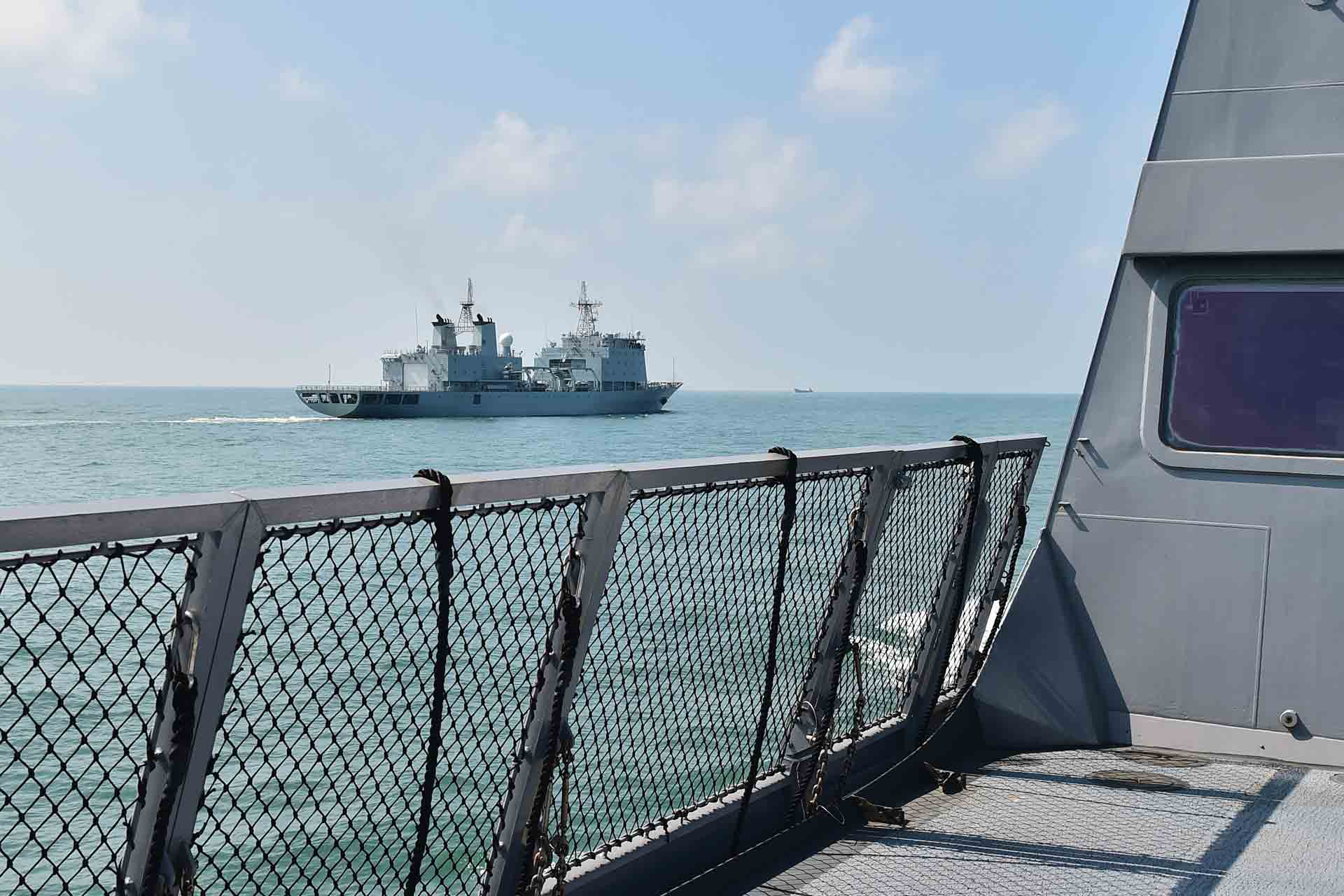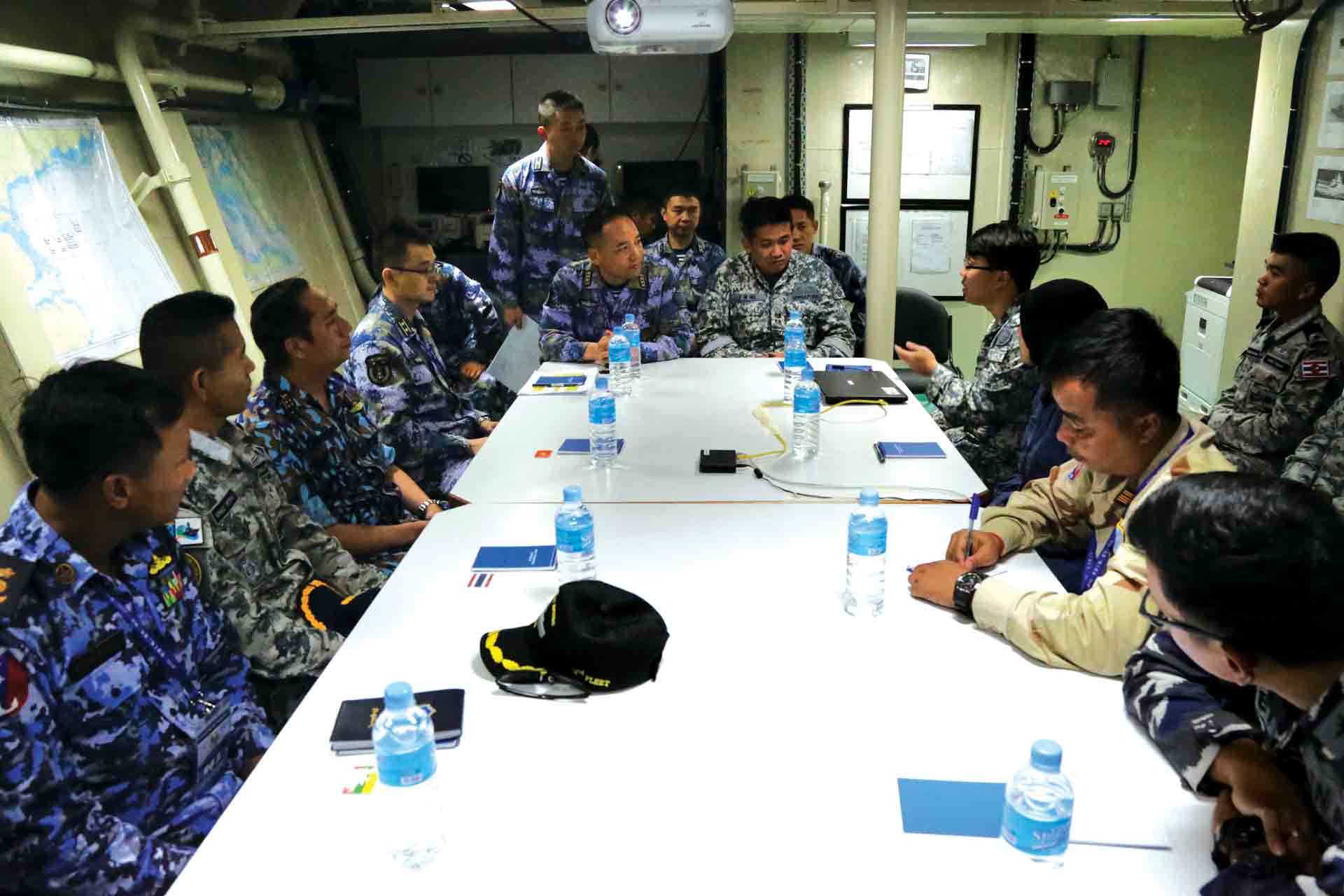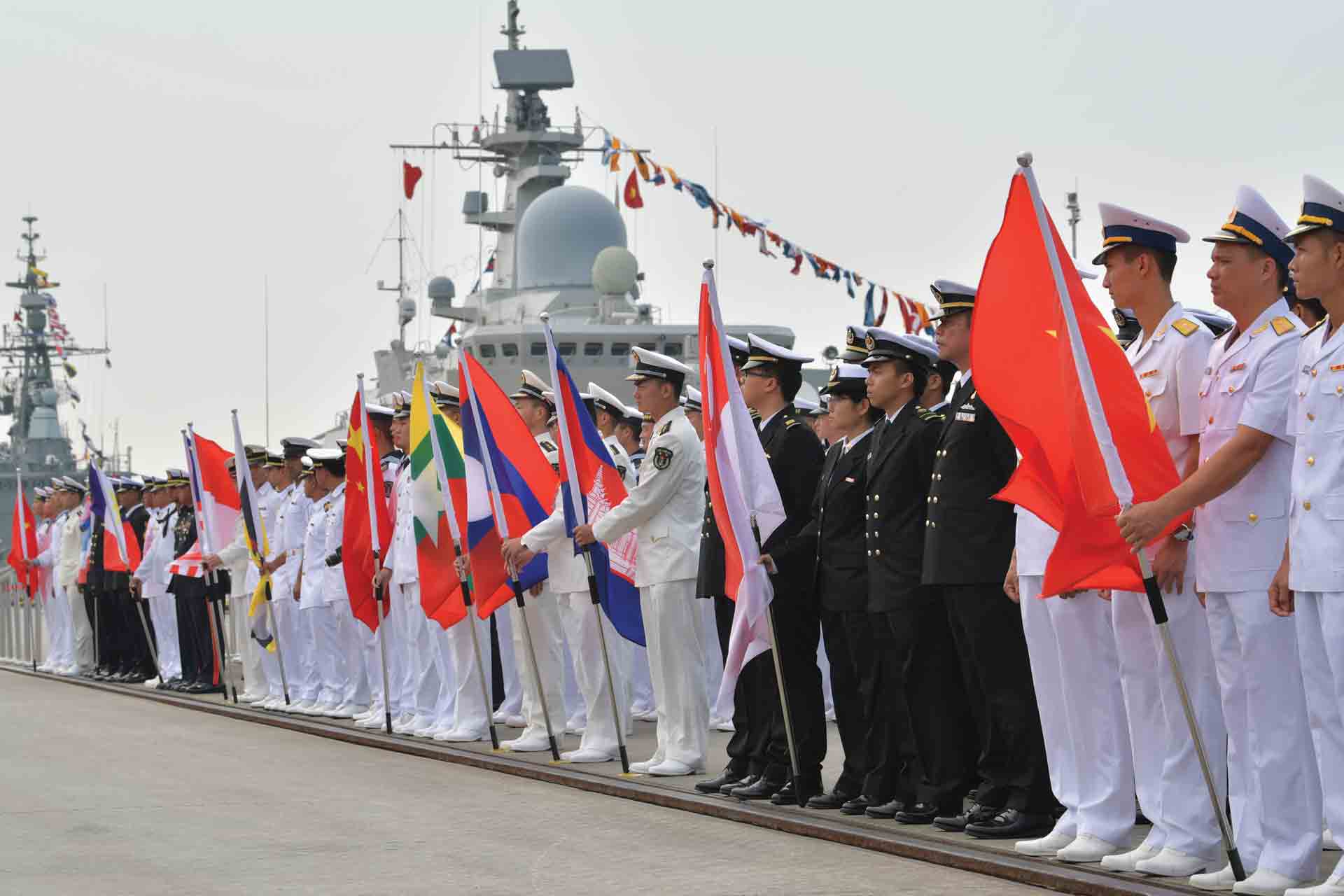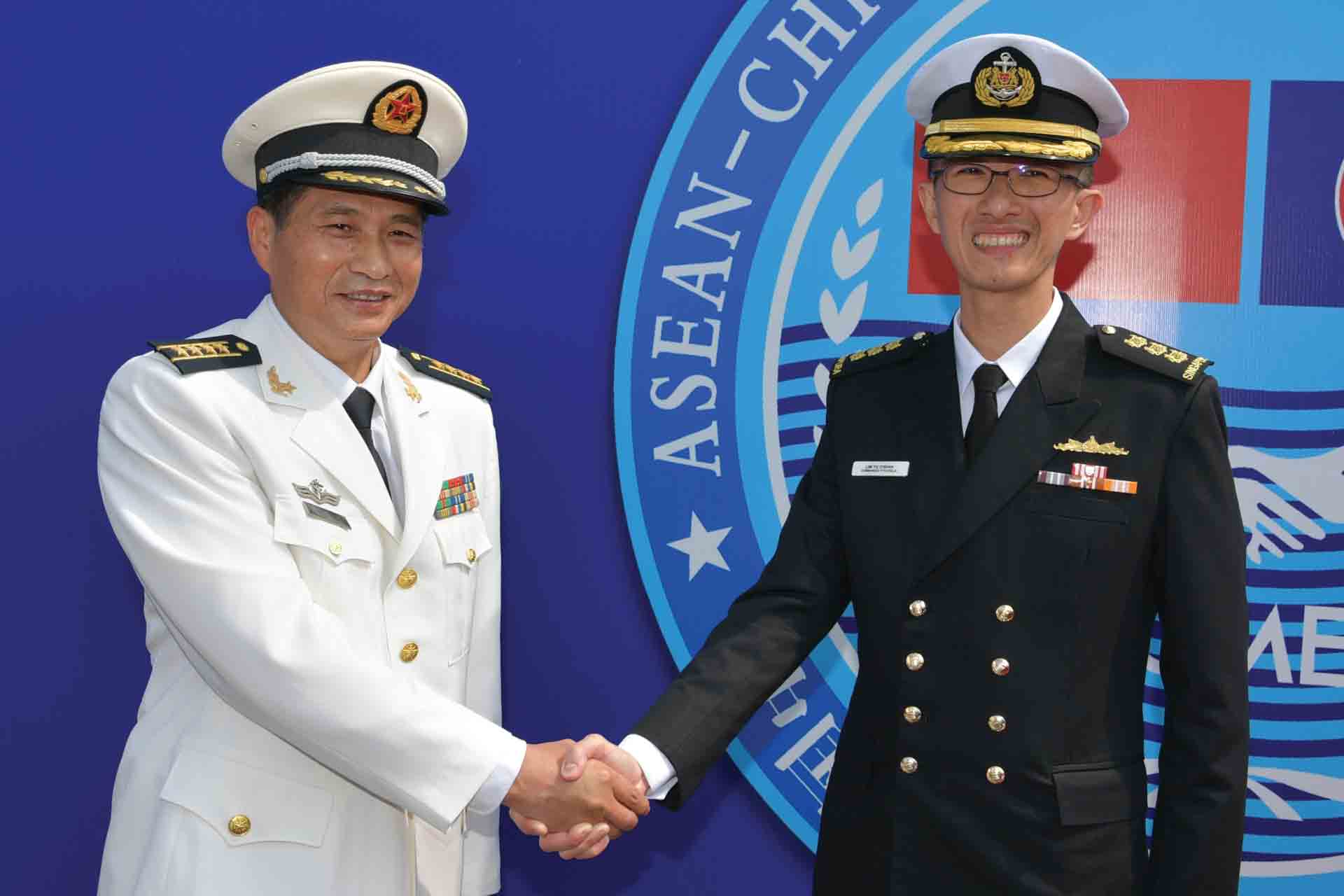OPS & TRAINING
ASEAN, CHINA NAVIES CONDUCT DRILLS TO BOOST MARITIME SAFETY
03 Dec 2018
Navies from 10 ASEAN countries and China build confidence and trust through joint search-and-rescue (SAR) operations and drills at sea.
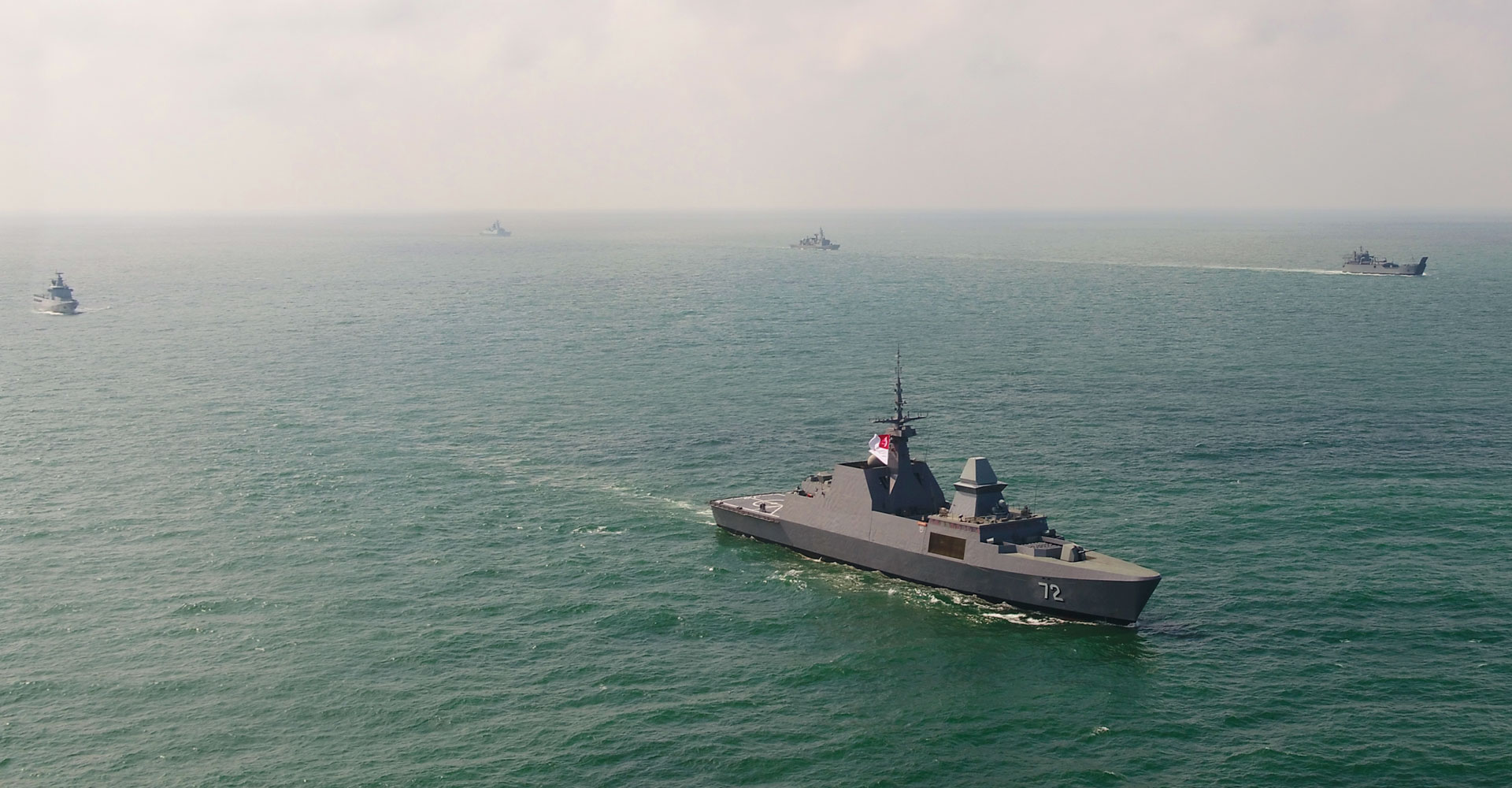
A tanker and a ferry have collided in the waters off Zhanjiang city in southern Guangdong, China, triggering a multinational SAR effort.
Eight naval ships in the vicinity — from China, Brunei, the Philippines, Singapore, Thailand and Vietnam — work together to comb a five nautical mile (9.26km)-wide area for survivors.
All survivors are found and brought on board a Chinese ship before night falls. But the next morning, the condition of one of the survivors has worsened. With no time to waste, a Chinese helicopter evacuates the survivor to a ship with the necessary medical facilities.
This was the scenario played out during the ASEAN-China Maritime Exercise from 22 to 27 Oct. It involved more than 1,000 personnel from the ASEAN navies and China, as well as eight ships — including frigate RSS Stalwart — and three helicopters.
The exercise was co-organised by the People's Liberation Army Navy (PLAN) and the Republic of Singapore Navy (RSN). A table-top exercise had been held in Singapore in August to prepare for this second phase.
Conducted in waters about 30 nautical miles off Zhanjiang, the two-day sea phase comprised five components or serials: manoeuvring in close formation, a communications drill, a joint SAR operation, helicopter cross-deck landings and a simulated maritime replenishment.

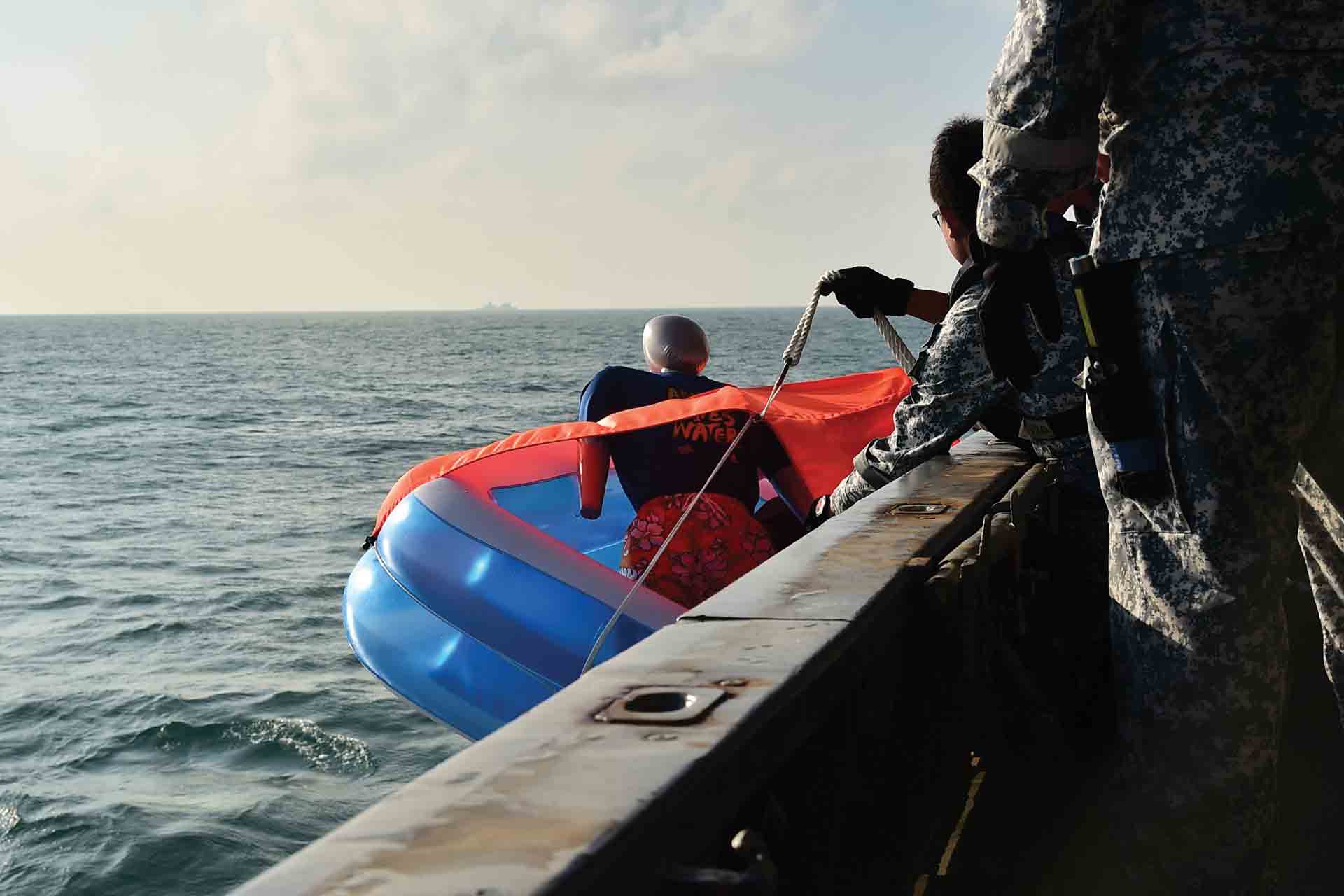
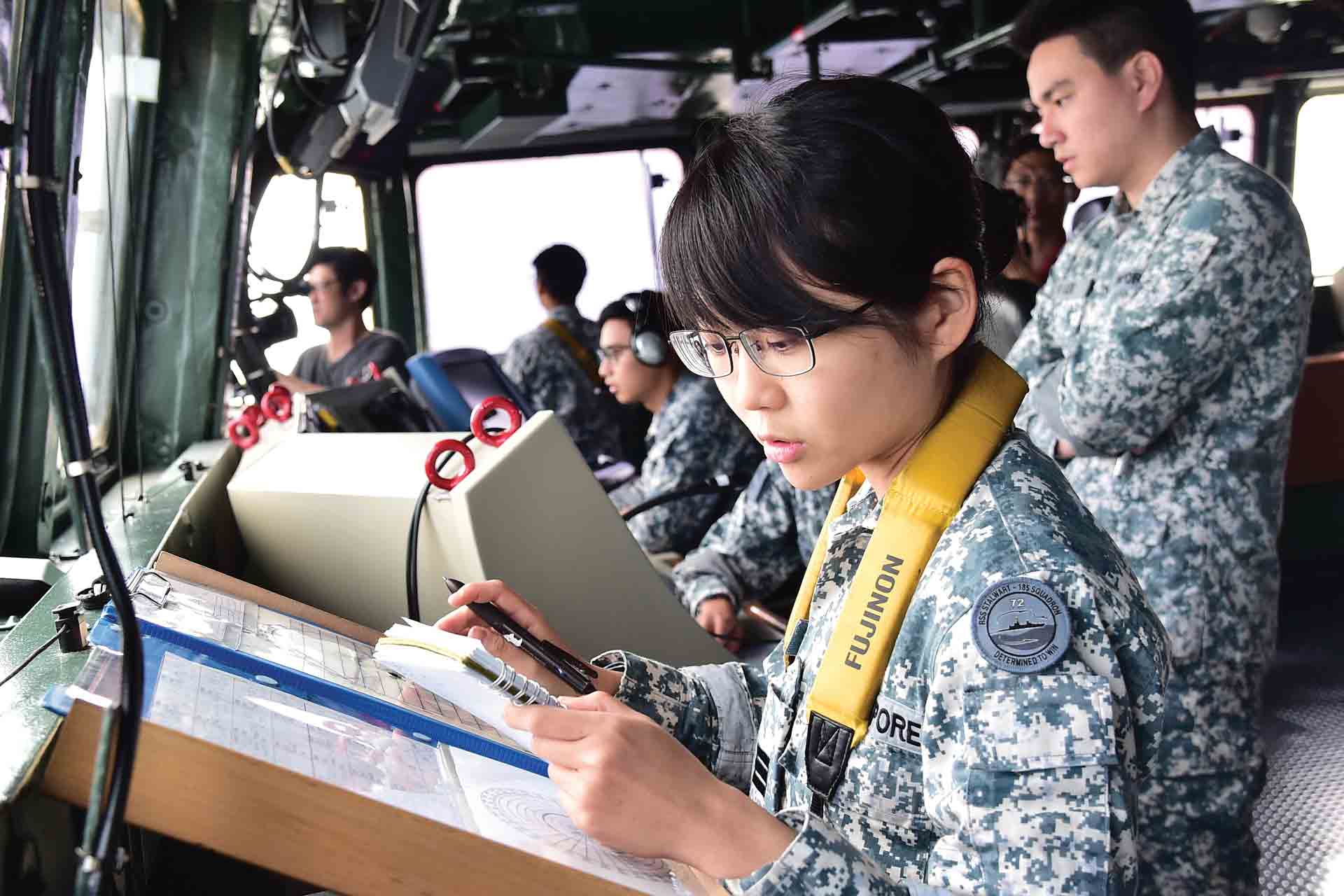
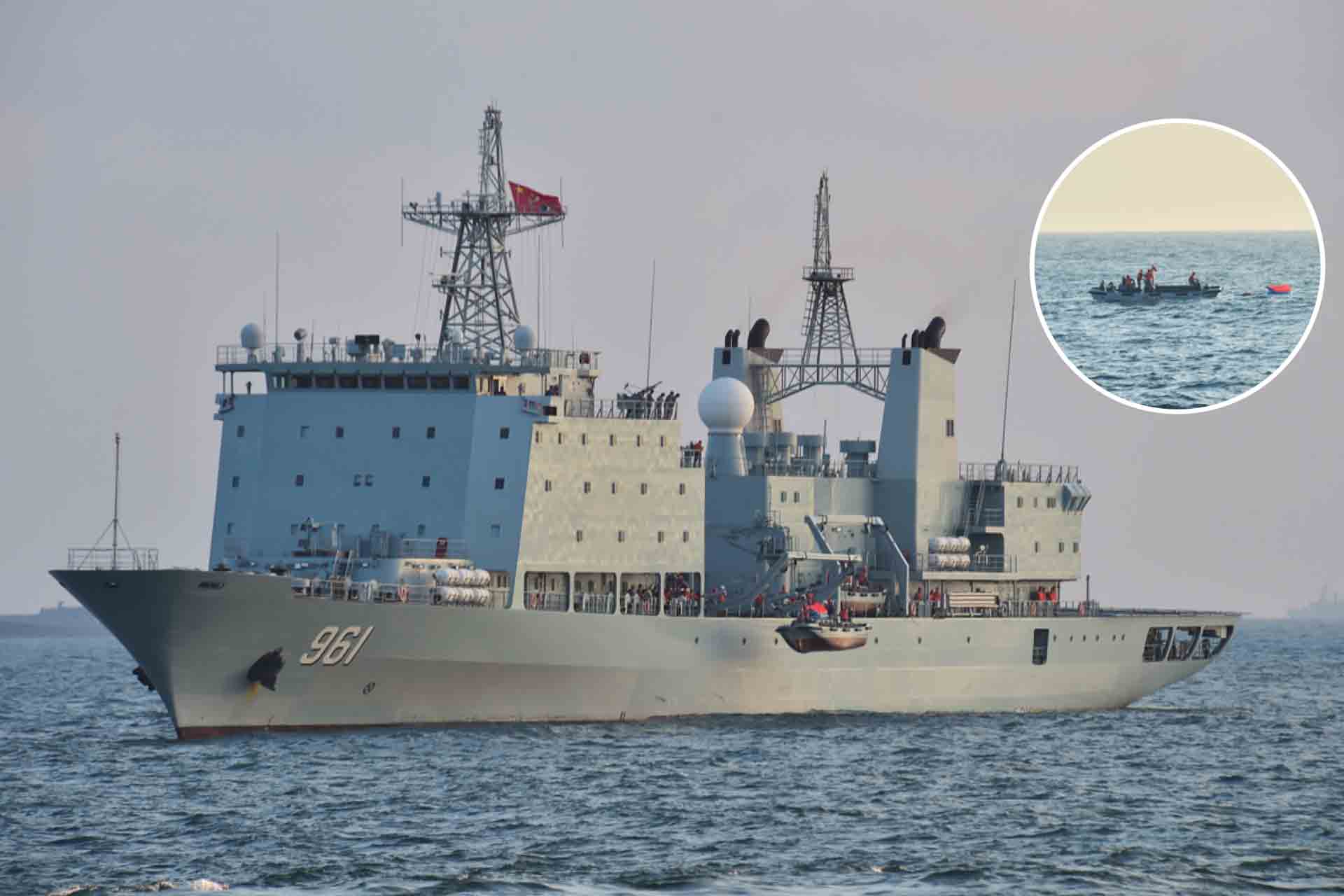
A common language
A key focus of the exercise? Practising the Code for Unexpected Encounters at Sea (CUES). This is a set of naval protocols specifying safety procedures, communication plans and manoeuvring instructions.
Lieutenant Colonel Aaron Li, Commanding Officer of RSS Stalwart, explained: "CUES provides an avenue for you to state your intention — using letters and numbers — without having to articulate it in plain language."
During the exercise, using this naval code helped sailors from different countries to overcome language barriers and communicate with greater speed and clarity.
Military Expert (ME) 1 Joel Johnson, 29, a communications system operator on RSS Stalwart, said: "When we didn't have CUES, I had to repeat myself a few times. And sometimes I didn't understand what they were trying to tell me because of their accents. With CUES, it's a one-time thing."
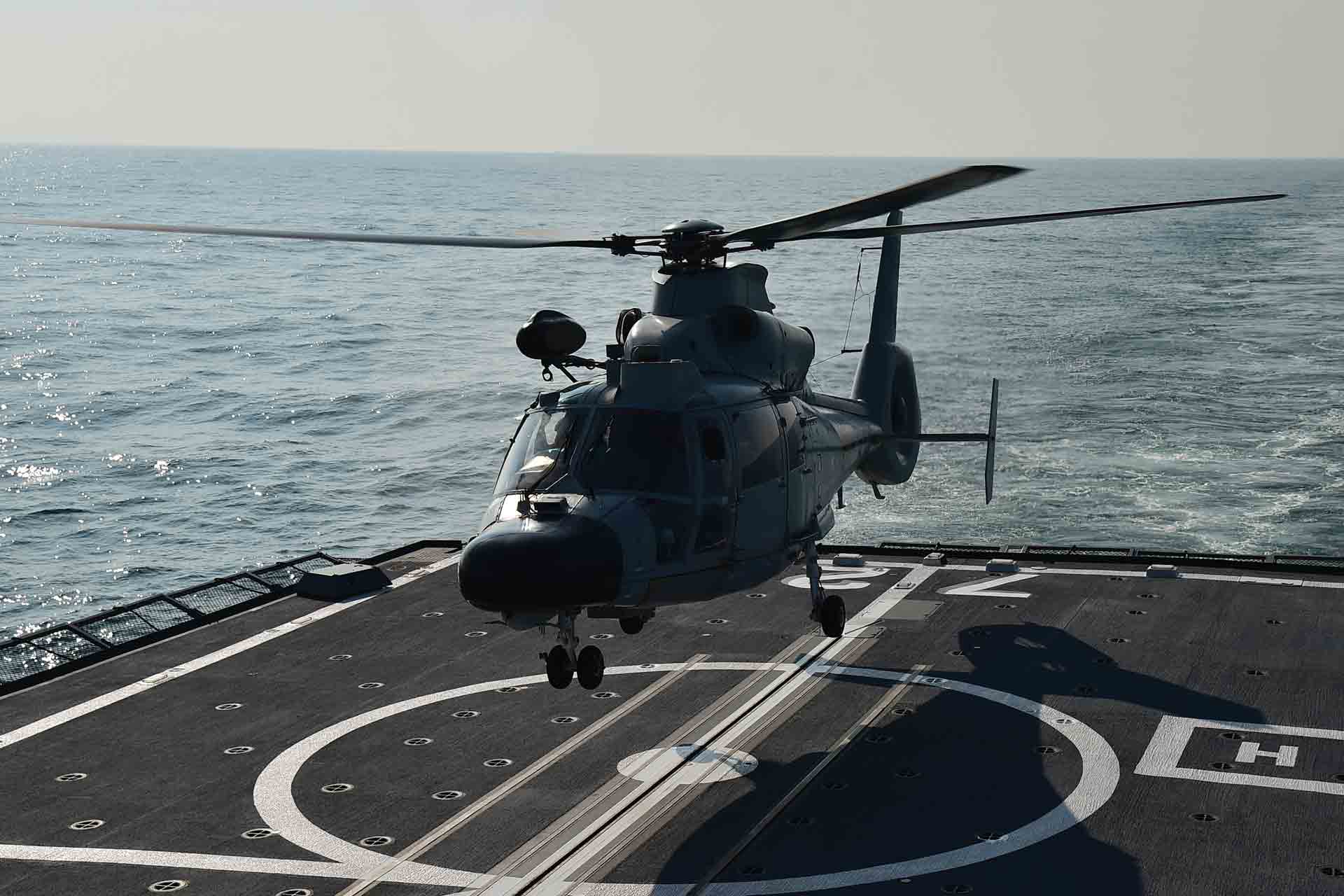
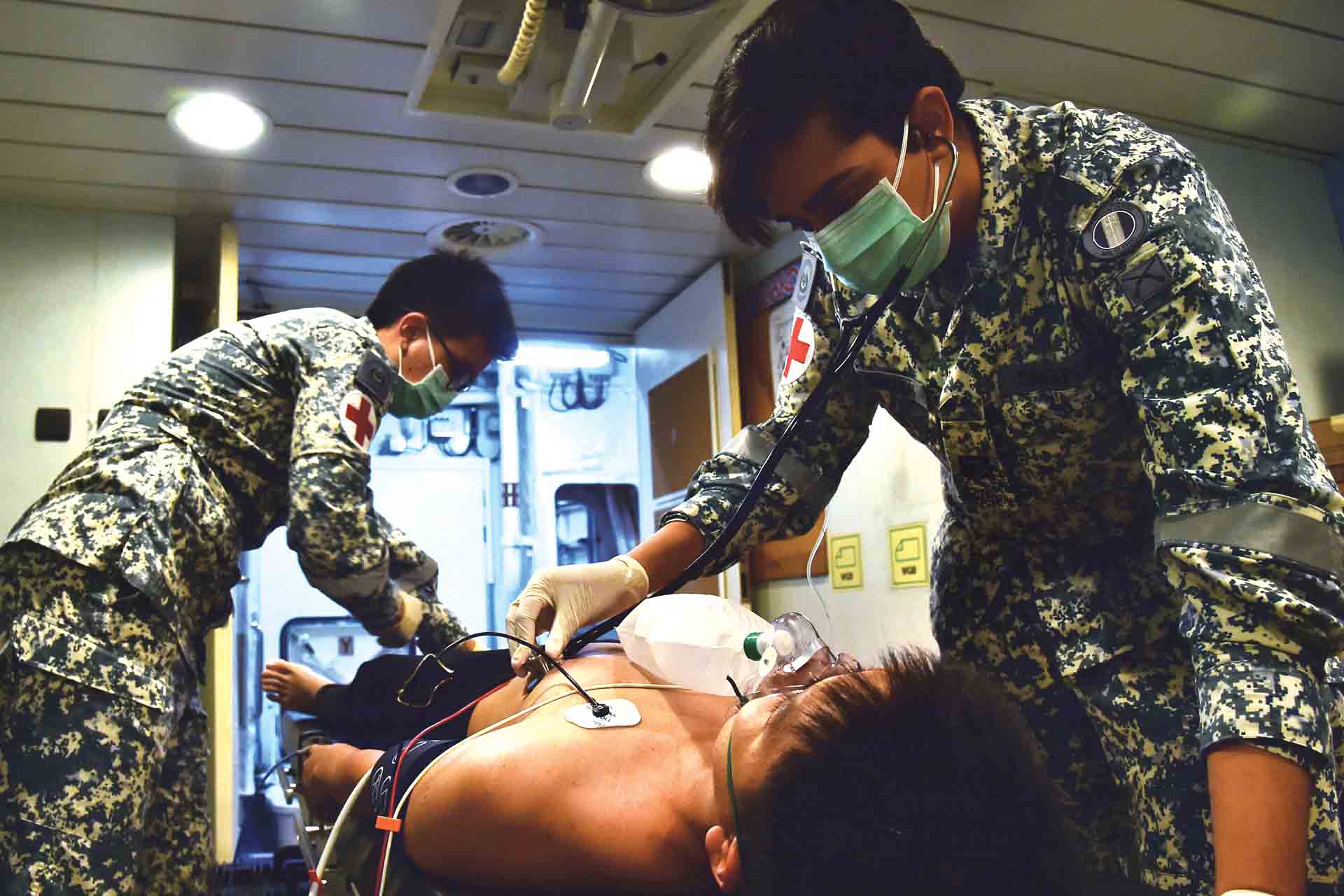
Prevent misunderstanding
With four ASEAN member states — Brunei, Malaysia, the Philippines and Vietnam — and China having conflicting claims in the South China Sea, CUES has an important application beyond just the exercise.
Exercise co-director Colonel (COL) Lim Yu Chuan, who is Commander of First Flotilla and Commanding Officer of 185 Squadron, said: "(CUES) has proven very useful as a means to help us communicate and coordinate our tactical intentions on the ground…
"(This exercise) has helped (all participating navies) foster greater confidence in using CUES when they meet at sea. And this will help to prevent misunderstandings or miscalculations in the future."
Lieutenant (Junior Grade) John Emmanuel Sison, Public Affairs Officer of the Philippines' Naval Task Group 88, shared similar sentiments: "Whatever experiences we've learnt here will be taken back home. We will ensure that this will be institutional knowledge, not just by us in the contingent, but by everyone in the organisation (so that we are) able to implement CUES when the need arises."
Building ties
Minister for Defence Dr Ng Eng Hen, who visited the exercise's joint command post on 23 Oct, urged navy officers of ASEAN countries and China to spend more time building personal ties and understanding one another during peacetime.
"If there is any mishap, hopefully you can call up the other person and — through your personal ties and relationships that you've built up before — reduce miscalculations," he explained.
The ASEAN-China Maritime Exercise marked a milestone in Singapore's efforts to advance regional stability as Chair of the ASEAN Defence Ministers' Meeting in 2018. Singapore was also the country coordinator for ASEAN-China relations from 2015 to 2018.
Exercise co-director Senior Captain (Snr CAPT) Zhu Jianda, who is Commander of PLAN Combat Support Flotilla, Southern Theatre Command, hailed the exercise as a success.
"Through this exercise, ASEAN and China navies strengthened friendships and enhanced mutual understanding and cooperation. I hope to see more of such interactions in the future."
Enhanced co-operation
For ME3 Suresh S/O Shyamlal, 36, a flight deck controller on RSS Stalwart, it was his first time working with a non-English speaking pilot to land a helicopter.
His role was to guide the Chinese pilot using hand signals. Before the operation, he had a discussion with the pilot, with the help of an interpreter, to ensure that they understood each other's operating procedures.
"Having the Chinese helicopter land and depart without any safety breaches is ‘mission accomplished' for me," said ME3 Suresh, adding he was confident of doing another helicopter cross-deck landing drill with the Chinese in future.
Similarly, Lieutenant Baharudin Haji Salleh, 33, an assistant operations officer of Bruneian offshore patrol vessel KDB Daruttaqwa, was glad "we had the chance to share experiences with our counterparts, (and exchanged) information, knowledge and best practices".
3rd Sergeant Yang Wu found the exercise an eye-opening experience. The 18-year-old full-time national serviceman is the youngest crew member of RSS Stalwart.
"(This exercise has allowed me) to see the kind of roles the navy plays in both military and diplomatic affairs… It has also helped me appreciate how National Service contributes to our defence," said the weapon systems operator.
ALSO READ IN OPS & TRAINING

Exercise Wallaby 2025: To see better, shoot faster
31 Oct 2025
The SAF focuses on complex strike missions and multi-domain integration in Exercise Wallaby 2025, the 35th edition of its largest unilateral overseas exercise.

Ex Wallaby 25 – Greater Integration and Complexity
25 Oct 2025
The 35th edition of the SAF’s largest unilateral overseas exercise is an opportunity for expanded scale and deeper integration towards an effective, networked fighting force.

Ex Forging Sabre ramps up use of unmanned assets in integrated strike operations
12 Sep 2025
In this 10th edition of Exercise Forging Sabre, the SAF sharpened its cutting edge for the dynamic modern battlefield, with expanded integration between manned and unmanned platforms.

